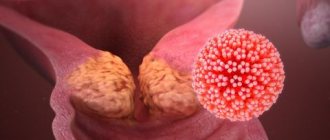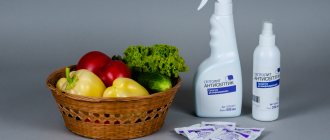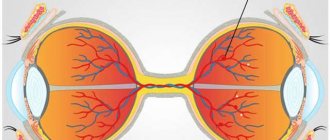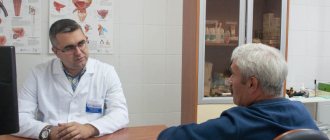Rotovirus infection is an acute form of pathology in which the gastrointestinal tract is damaged and a clear clinical picture develops. Symptoms include dyspeptic disorders, intoxication and dehydration. The condition is common, occurring in adults and children.
The causative agent of rotavirus infection and mechanisms of infection
The causative agent of intestinal flu is rotavirus (from Latin rota - wheel), a virus from the Reoviridae family. The virus owes its name to its shape - it looks like a wheel with short spokes and a thick rim. Rotavirus is resistant to low and high temperatures, ultrasound, and does not die in chlorine and formaldehyde.
The most common mechanism of spread of rotavirus infection is fecal-oral. The virus enters the body from contaminated objects and dirty skin of the hands - which is why the key measure to prevent rotavirus infection is personal hygiene.
The disease is also spread by airborne droplets (by contact with a sick person) and nutritional routes (by eating poorly washed foods and contaminated water).
SEASONAL INTESTINAL INFECTIONS. Symptoms, treatment, prevention
ROTAVIRUS INFECTION
Rotavirus infection is an infectious disease caused by rotaviruses. Rotavirus, the symptoms of which manifest themselves in moderately severe symptoms of enteritis or gastroenteritis, is often combined with respiratory and intestinal syndromes during the initial manifestation of the disease. People of any age are susceptible to rotavirus infection, however, the incidence is most often observed among children from six months to two years.
Rotavirus infection is also defined as rotavirus gastroenteritis, rotavirosis, stomach or intestinal flu. The virus is transmitted primarily through food, that is, through unwashed food, dirty hands, etc. Thus, infection is possible in a variety of ways and, again, through products with rotavirus (in particular, dairy products should be highlighted here, which are especially susceptible to infection due to the specifics of their production). It is noteworthy that rotaviruses can live even in the refrigerator for a long period of time; chlorination of water does not affect them. Contrary to the generally accepted opinion regarding the effect of holy water on viruses due to its altered structure, it should be emphasized that it does not in any way affect the activity of rotaviruses.
Considering that rotavirus also provokes inflammation in the respiratory tract, its spread occurs in a similar way to the traditional influenza virus, that is, by droplets (coughing, sneezing). The virus penetrates the mucous membrane of the gastrointestinal tract (GIT), with the small intestine being predominantly affected. When the gastrointestinal tract is affected, rotavirus infection causes a disease such as enteritis, which manifests itself in inflammation of the intestinal mucosa, respectively, after which symptoms characteristic of rotavirus infection occur. They are expressed, in particular, in disturbances in the digestion of food, which provokes the development of diarrhea with simultaneous dehydration.
Symptoms of rotavirus infection in adults
As we have already noted, the course of the disease in adults is milder than in children. As for recurrent incidence, here, in contrast, with a low level of antibodies, immunity is not developed properly against rotavirus infection, and therefore its symptoms may recur again. The specificity of the disease is the same. So, it is also a viral gastroenteritis, the course of which affects the gastrointestinal tract, and is also expressed in dehydration and general intoxication. The most common method of infection is contact with contaminated food, but household, water and other contact cannot be ruled out. In adults, intoxication is moderate, with lethargy, muscle weakness, headache and weakness, low-grade fever (up to 37.7°C). The pharynx becomes swollen, a white coating appears on the tongue, and the heart sounds are muffled (as determined by examination by a doctor). The onset of the disease is also characterized by its own severity, which manifests itself during the first day from the moment of infection. Pain in the abdomen (epigastric region) also occurs. The stool is watery (within 3-9 times per day), nausea and vomiting are also present among the symptoms.
With this infection, diarrhea is profuse, characterized by a sharp odor and pale color, in some cases there may be an admixture of mucus, lasting up to a week. Given the severity of fluid loss, dehydration also develops quickly, which, in turn, can lead to circulatory failure and the body stopping the production of urine (anuria). It should be noted that rotavirus infection is often a current phenomenon that occurs as a complication of diseases affecting the respiratory tract (rhinitis, pharyngitis). Meanwhile, in many cases, the disease is characterized by a mild course with the absence of its characteristic symptoms in the form of nausea and vomiting, while stools are loose and infrequent. In any of the variants of the course of the disease, the patient is a carrier of the infection, and accordingly, in this he is dangerous for the people around him.
Treatment in adults
Considering the greater adaptability of the adult organism to this type of shock (and the adaptability of the gastrointestinal tract to them in particular), as well as their stronger immunity, the disease occurs in a mild form of exposure. Considering this, special treatment is not required in this case. If the symptoms are severe, then treatment is aimed at eliminating specific symptoms. So, this may include preventing dehydration by frequently drinking saline solutions (based on rehydron), as well as water and tea. Additionally, sorbents are taken to accelerate the removal of toxins and improve well-being, as well as astringent medications. An important point is also the dietary restriction (in particular, the restriction applies to the consumption of foods rich in carbohydrates in the form of fruits, sugar, vegetables), again, dairy products are excluded. Due to the fact that the disease is contagious, the patient must be isolated during treatment, thereby limiting the spread of rotavirus infection. Hospitalization is possible based on epidemiological and clinical indications. If you suspect a rotavirus infection, you should contact your primary care physician or infectious disease specialist, who will determine the necessary treatment based on the required tests. Additionally, he can refer the patient to a gastroenterologist.
VIRAL HEPATITIS A
Hepatitis A is a viral infection, one of the most common causes of liver inflammation worldwide. Infection occurs mainly through contaminated food and water. Direct contact with the patient, as well as the use of the same utensils and a common toilet, play a role. The virus can survive on human hands for several hours, and on food at room temperature for even longer.
The virus can also be transmitted through shellfish that have previously lived in water contaminated by sewage or on fruit or raw vegetables contaminated during processing.
Cooking completely kills the hepatitis A virus, but the food may become contaminated after cooking. The virus can spread among people due to poor hygiene practices and close contact in areas with poor sanitation and overcrowding.
The disease occurs frequently in all developing countries, but is quite rare in developed countries, where good hygiene and vaccination control the spread of the disease.
Symptoms of hepatitis A
Hepatitis A begins with a fever lasting 4 to 10 days, feeling weak and unwell, loss of appetite, nausea and vomiting, and muscle pain. In the next stage of the disease, when the liver is involved in the process, the urine darkens. Another day or two later, the whites of the eyes and skin turn yellow (jaundice) and the stool becomes colorless. At this time, the initial fever and nausea disappear. The patient may experience generalized itching and pain in the abdomen.
Some people, especially children, may have no symptoms of hepatitis A, so the disease may be misdiagnosed or go undetected.
Hepatitis A does not cause severe long-term damage to the liver, but in rare cases, severe liver failure can lead to coma and death. Most patients with acute hepatitis A recover completely from the infection (unlike hepatitis B and C, which cause chronic, persistent inflammation of the liver).
People who have fully recovered from this disease develop antibodies to hepatitis A and develop lasting, lifelong immunity.
Prevention of hepatitis A
In addition to hygiene precautions, vaccination remains the most effective approach to preventing viral hepatitis A. Hepatitis A vaccination is recommended for all travelers to countries with moderate to high incidence rates (especially developing countries). Your doctor or doctors at the vaccination center will tell you whether vaccination is necessary when traveling to a particular country. Immunoglobulins are no longer recommended as a routine method of preventing hepatitis A in travelers.
Hepatitis A vaccine is available in forms for adults and children over two years of age.
NOROVIRUS INFECTION
There are several types of viruses that can cause intestinal infections in humans. One such virus is the novovirus. Noroviruses, together with rotaviruses, are the main cause of intestinal infections.
The main routes of transmission of norovirus are:
- food, i.e. a person can become infected, for example, by eating unwashed fruits or vegetables;
- aqueous, when a person becomes infected by drinking a certain amount of liquid containing the virus;
- household contact, when the virus enters the body through unwashed hands, household items, dishes, etc. Most often, transmission of the virus occurs from a sick person through household items to a healthy person. People infected with the virus can infect others during the peak of their illness and for the next 48 hours. In some cases, viruses can be cleared from the body within 2 weeks after the onset of the disease.
Symptoms of norovirus infection
The first symptoms of the disease appear 24-48 hours after infection. This can be one-time, but more often repeated vomiting, diarrhea, severe nausea, and fever. Norovirus most often causes diarrhea and severe vomiting, but sometimes it can only cause vomiting. Disorders of the digestive system may be accompanied by muscle pain, headaches and weakness. Symptoms of norovirus infection usually go away on their own within 12 to 72 hours. After illness, the body develops immunity to the virus, but for a very short period, about 8 weeks. After this period, a person can become infected with norovirus again and become ill.
Diagnosis of norovirus infection
In this case, determining the type of virus that caused the intestinal infection is not of great importance, because Treatment of such diseases is usually carried out in the same way. But, if the need arises, you can donate blood to determine norovirus using PCR or ELISA.
Prevention of norovirus infection
There is currently no vaccine for Norovirus. Despite the high contagiousness, resistance and long-term viability of viruses on contaminated objects in the external environment, preventive measures are elementary. As with any intestinal infection, to avoid getting sick, you should follow these rules:
- maintaining personal hygiene (thoroughly washing hands before eating and preparing food, after using the toilet, after returning from the street, flushing feces with the toilet lid closed);
— careful processing of vegetables and fruits, consumption of thermally processed foods;
— consumption of guaranteed safe water and drinks (boiled water, drinks in factory packaging);
- when swimming in ponds and pools, do not allow water to get into your mouth.
If there is already a sick person in the house, then you need to be very careful about hygiene - protecting your hands with gloves when caring for the sick, contacting objects in the patient’s environment, thoroughly washing your hands with soap and water, and treating them with alcohol-containing skin antiseptics.
At least once a day, it is necessary to treat all surfaces with which an infected person has come into contact: bed frame, bedside tables, bathrooms, handles, etc. Given the high viability of the virus, cleaning is best done with chlorine-containing disinfectants.
Dishes, washable items used by an infected patient, as well as toys (if a child is sick) must be boiled.
All items that have been soiled with vomit must be washed immediately at a temperature of at least 60º.
Such observance of hygiene rules will help to avoid further spread of infection and re-infection of people.
Epidemiology
Rotavirus infection is a typical seasonal disease. According to statistics, in almost 93% of cases the disease develops in the winter months.
The infection often spreads in epidemic outbreaks - especially in kindergartens, hospitals, nursing homes and other institutions where children or adults with weakened immune systems are in close contact.
Children are most susceptible to infection. The share of rotavirus infection is 39.4% of all episodes of diarrhea under the age of 5 years.
How is rotavirus disease transmitted?
The main source of infection is a sick person. The virus is transmitted through the “hand-to-mouth” route. Through the patient's unwashed hands, children's toys, dishes, food and household items contaminated with viruses, the infectious agent enters the body.
Next comes the incubation period of rotavirus infection: the “wheel” virus enters the small intestine and begins to multiply in the cells of the mucous membrane. At the first sign of illness, billions of viruses begin to be excreted in the feces. On the 7th-10th day of the disease, virus release ends. The favorite time of year for this viral infection is autumn and winter. The virus is highly contagious, so it spreads quickly in children's institutions.
What's interesting...
Scientists, based on many years of observations, claim that rotavirus activity increases shortly before influenza outbreaks.
Signs and symptoms5
- Uncontrolled diarrhea is the most dangerous symptom of rotavirus gastroenteritis. In some cases, diarrhea leads to dehydration, which can in turn be fatal. 17.8% of deaths from diarrhea under 5 years of age are due to rotavirus infection.
- Excessive vomiting is another symptom that leads to dehydration.
- Severe stomach and intestinal cramps, flatulence.
- Dry cough, nasal congestion, sore throat are symptoms due to which, in the early stages, rotavirus infection can be confused with the flu or tonsillitis (sore throat).
- Conjunctivitis, enlarged lymph nodes.
- General weakness, apathy.
- Appetite disturbances - up to complete refusal to eat and drink in severe forms of the disease.
- Pale skin, dry mouth, chapped lips.
- Severe increase in body temperature.
General clinical differences of rotavirus
Rotavirus infection rarely occurs in a severe form requiring hospitalization. There are some signs by which one can suspect the disease:
- the most common patients are children from 6 months to 2 years (> 95% of cases);
- the first manifestations occur on the fourth day after infection;
- vomiting once on the first day (there is no constant vomiting);
- There is no blood in the stool.
This infection rarely has an acute onset with severe dehydration.
A correctly collected anamnesis also helps to differentiate the disease and identify rotavirus in a child - data on the onset of the disease, possible route of infection, contact with potential carriers of the virus.
Course of the disease7
The following stages are characteristic of intestinal flu:
- The incubation period is from 12 hours to 5 days.
- Acute onset - as a rule, already in the first hours of illness the patient’s temperature rises sharply, chills appear, a strong cough begins, and the nose gets stuffy. A little later, the main symptoms appear - nausea, diarrhea with watery stools, cramping pain in the stomach and intestines.
- If the infection is properly treated, diarrhea will last from 5 days to a week. In the first 2-3 days, the stool remains watery (in infants it may become colorless), then it becomes clay-like.
- Pain and sore throat, runny nose and cough disappear after 2-3 days. At the same time, the body temperature remains elevated.
- The rehabilitation period after rotavirus gastroenteritis is 5-7 days.
Diagnosis of the disease
In order to correctly establish a diagnosis, you need to consult a specialist. Only a doctor can conduct all the necessary examinations and prescribe a treatment plan for rotavirus infection.
Making a diagnosis requires the patient to undergo the following tests:
- General blood analysis. Rarely does a patient have an elevated white blood cell count.
- General urine analysis. These values remain unchanged.
- General analysis of stool. Characterized by an increased number of leukocytes, starch, and muscle fibers.
The final diagnosis of rotavirus infection is made by a specialist only after the presence of a bacterial infection has been ruled out using various tests and analyses. It is equally important to wait for the results of studies such as virological and serological before treating rotavirus infection in adults
.
Possible complications8
Rotavirus infection poses the greatest danger to young children from the first days of life to 3-5 years and pregnant women:
- At an early age, intestinal flu is a deadly disease - severe dehydration of the body can lead to death.
- Dehydration caused by rotavirus gastroenteritis during pregnancy leads to the risk of miscarriage.
Possible complications of rotavirus infection:
- Pancreatitis, gastritis, enlarged pancreas.
- Intestinal inflammation.
- Hemorrhagic gastroenteritis.
- Acute renal failure.
- Circulatory disorders.
- Gasser syndrome.
- Necrotizing enterocolitis.
To minimize the risk of the disease and prevent the development of complications, it is important to promptly diagnose rotavirus infection and begin adequate treatment.
Routes of transmission
Rotavirus infection is transmitted from a sick person in several ways:
- fecal-oral;
- contact and household;
- airborne.
At the onset of the disease, the feces of an infected person contain up to 1011 particles of rotavirus. After about a week, their number decreases, but the person remains a source of infection for almost a month.
What factors influence the transmission of the virus? These are: water, food, household items. When the pathogen enters the aquatic environment, especially into water supply systems, epidemic situations may occur. Among food products, the most dangerous are dairy and meat products, raw vegetables and fruits. The hygienic condition of kitchen equipment, household items, and cleanliness of hands are of great importance.
Prevention
The key measure to prevent rotavirus is to observe the rules of personal hygiene - timely washing of hands, eating only thoroughly washed and properly processed foods, using only filtered boiled water for drinking. Water used for domestic purposes must be treated or chlorinated.
Rotarix and RotaTek vaccines show high effectiveness in preventing rotavirus infection.
- Rotarix is a live monovalent vaccine of an attenuated strain of human rotavirus. The vaccination course consists of two doses. The first dose should be given to the baby from 6 weeks of age. The interval between doses should be at least 4 weeks. The vaccination course is preferably completed by 16 weeks of age and must be completed by 24 weeks of age.
- RotaTek is a live oral pentavalent vaccine containing five live reassortant strains of rotavirus. The vaccination course consists of 3 doses with an interval between doses of 4 to 10 weeks. The course must be completed before the baby reaches 32 weeks of age.
How long does the virus live
The pathogen has a fairly high viability - on various surfaces, depending on environmental conditions, it can retain its properties for up to a month, and in feces for up to six months. The virus is resistant to factors such as:
- high temperature (up to 60-70˚С);
- low temperature (withstands even freezing);
- ultrasonic influence;
- UV irradiation;
- antibacterial agents;
- fat solvents;
- chloroform and ether.
Rotavirus can be killed by boiling, treating with strong alkaline solutions or acids. The pathogen has increased sensitivity to ethanol (96˚), formaldehyde, and hydrogen peroxide.
Treatment12
Drug treatment for rotavirus infection is prescribed by a doctor. In most cases the following are used:
- To remove toxins: activated carbon, Smecta, Enterosgel.
- To restore the functions of the gastrointestinal tract: digestive enzymes (Festal, Somilase, Solizim).
- To reduce the temperature (in cases where it rises above 38 ºС): antipyretic drugs (Ibuprofen, Paracetamol).
- To relieve stomach pain: antispasmodics (No-Shpa, Enterofuril).
- To suppress bacterial infections that often accompany rotavirus gastroenteritis: antibiotics.
- To restore electrolyte balance: probiotics.
General recommendations:
- Drink small amounts of fluid frequently to prevent dehydration. You should drink clean boiled water, dried fruit compotes, berry fruit drinks, and unsweetened tea.
- The patient's menu should include light, quick-to-digest, protein-rich foods - dairy-free cereals, steamed poultry and fish cutlets, fruit and vegetable purees. From the patient’s diet it is necessary to exclude everything fried, smoked and salted, sweets, foods high in fats and carbohydrates, flour products (including pasta), millet and pearl barley porridges, milk and fermented milk products, spices, coffee, legumes (and other products , which can cause flatulence).
How to treat rotavirus
No specific medications have been developed for rotavirus infection, so there is no point in running to the pharmacy for a magic pill. The most important treatment methods:
- Drink plenty of fluids. It is important to drink a lot of water - pure and mineral (potassium-sodium) - throughout the day. You can use Regidron to reduce the risk of dehydration.
- A gentle diet. In the first couple of days, it is recommended to refuse food, then include in the diet boiled rice and rice “broth”, mashed potatoes with water, crackers and dryers, boiled soft white meat. During treatment, you should exclude all foods that cause fermentation from your diet - berries, vegetables, fruits, dairy products, sweets and baked goods.
- Adsorbent preparations - activated carbon, polysorb, enterosgel - and multienzyme preparations to improve the absorption of nutrients from food.
Under no circumstances should you take antibiotics! They do not have any effect on the virus, but at the same time they destroy the natural intestinal flora, which protects our immunity.
In most cases, a person recovers on his own without medical intervention if he follows the recommendations described above. But with a clear decrease in the body’s immune functions, complications are possible - bacterial damage to the intestines, damage to the nervous system, dehydration.
An increase in temperature to 38 * C or higher, uncontrollable vomiting and diarrhea, a serious loss of strength is a reason to urgently consult a doctor. If the condition does not improve on the third day after the onset of the disease, medical intervention is required. In some cases, the doctor may insist on hospitalization of the patient.
Kagocel for rotavirus infection
Post-registration studies of the drug Kagocel have shown that in case of combined viral lesions of the respiratory and gastrointestinal tracts (which includes rotavirus infection), taking Kagocel in combination with other medications promotes faster recovery and alleviation of the disease. Proven effects of Kagocel:
- increase in pathogen elimination by 3 times;
- reduction in the duration of fever by an average of 1.1 days;
- reduction in the duration of intoxication symptoms (headache, lethargy and loss of appetite) by 1.2 days;
- regression of catarrhal phenomena (relief of symptoms of pharyngitis and rhinitis by the 3rd–4th day of treatment);
- reduction in the duration of diarrhea by 1.5 days;
- acceleration of normalization of stool frequency for several days;
- acceleration of restoration of the function of the villous epithelium of the small intestine by 1.5 times.
Also, taking Kagocel allows you to reduce by 3 times the likelihood of re-infection of the patient with rotavirus gastroenteritis.
Drug treatment
Rotavirus infection is not treated with medications. Since no effective antiviral drug has been developed. The treatment protocol is to help the body cope on its own. Primarily replacing fluid loss with oral rehydration solutions.
The temperature can be brought down with age-appropriate antipyretics, and remember that when dehydrated, the temperature will not decrease, so drinking water is task number one.
Children's paracetamol is a must-have drug for a child's first aid kit. Made in Israel. Suitable for babies from birth. Delivery from a warehouse in Moscow.
How dangerous is the infection?
Rotavirus infection primarily poses a danger to the child’s body, since the child has not yet developed resistance to dehydration, and it occurs faster than in an adult. In addition, according to experts, rotavirus, transmitted even in a mild form (especially repeated infections) can subsequently cause:
- gallbladder problems;
- secondary lactase deficiency;
- food allergies;
- functional disorders of the gastrointestinal tract.
In adults, the infection can cause complications from the endocrine and cardiovascular systems if they have chronic diseases, for example, diabetes mellitus, a tendency to blood clots. A healthy adult can contract rotavirus without consequences.










